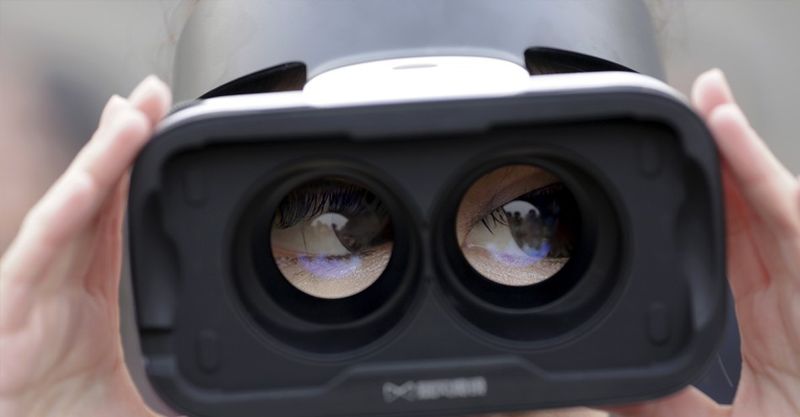Today Oculus VR, the virtual-reality hardware company Facebook acquired for $2 billion in 2014, releases its flagship headset, the Oculus Rift. In so doing, it launches the era of commercial virtual reality, capping three decades of dreams, prototypes, false starts, and retreats into industrial specialization. Rift isn’t alone: Later this year, Sony plans to ship its $399 PlayStation VR, a headset for use with its popular home console. And the Vive, a collaboration between the Taiwanese hardware manufacturer HTC and the American software company Valve, is also expected to appear in 2016. Cheaper options are available, too, including Gear VR, Oculus’s $100 Samsung Galaxy smartphone VR attachment.. And then there’s Google Cardboard, a cheap, paper VR housing for a smartphone that you can buy for $15. After decades of experiments and false starts, it would appear that commercial VR is finally here.
But a question remains: What is commercial virtual reality, anyway, and how does it relate to the decades-old science fictional dreams of VR? The answer is that it doesn’t, but that’s no comfort. We might be in for a far stranger future than our previous dystopic nightmares ever imagined.Marian Davis
* * *
Immersive displays hearken back to panorama paintings and stereoscopes of the 19th century—not to mention the ViewMaster toy, a set of binoculars for viewing circular photo slides, which first appeared in 1939. Still, those devices mostly share a common relationship to VR because human vision is binocular. TheSensorama, a stereoscopic, immersive, personal movie theater of the 1950s, is the first true precursor to VR entertainment today, for it embraced the sensory immersion—sight, touch, even smell—that would become a trademark of VR hype. Still, Sensorama was non-interactive: Viewers watched movies of things like motorcycles racing. That changed when the first head-mounted displays appeared by the early 1960s, including the Philco Headsight, a device used mostly for military surveillance that incorporated head-tracking for panning the camera source around the scene it observed.
By the mid-60s, the computer-graphics pioneer Ivan Sutherland described a concept, sometimes called the “Ultimate Display,” that would form the basis for later VR apparatuses, including the Oculus Rift and its brethren. Sutherland’s idea seems obvious in retrospect, but nothing of the sort had existed before nor was feasible at the time he imagined it: a computer-rendered 3-D virtual world viewed through a head-mounted display, with tactical and audio feedback, and user interaction.







